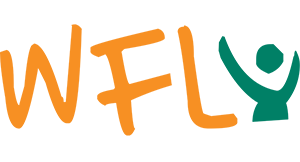About Waste for Life
Waste for Life supports educational and community strategies that
actively facilitate systemic environmental and social justice change.
Our founding program, Waste for Life, aims to reduce the damaging
environmental impact of non-recycled plastic waste products and to
promote self-sufficiency and economic security for at-risk populations
who depend upon waste to survive. We use scientific knowledge and
low-threshold/high-impact technologies to add value to resources that
are commonly considered harmful or without worth but are often the
source of livelihood for society’s poorest members. Our twin goals are
to reduce the damaging environmental impact of non-recycled plastic
waste products and to promote self-sufficiency and economic security for
at-risk populations who depend upon waste to survive.
Our second and recently launched program, Standing People Together,
emerges from observations working alongside many threatened communities
throughout the world, of the need for a critical reconnection of people
to people and people to nature. Our Forest Exploratorium, based on our
home site of Cala Munda, in Hankins, NY, provides nature-based play and
learning for children, professional development for teachers, and a
retreat to explore environmentally just alternatives that foreground these connections.
Our vision
Waste for Life believes that broad and equal access to society’s resources are the foundations of a just society. Our mission is to provide access to scientific knowledge and technology, usually circumscribed by privilege, to people living on society’s margins. We leverage our network to open up pathways towards autonomy and genuine economic security for people who need it most – those living at the intersections of waste and poverty. Our work is value-driven because it is based upon principles of solidarity, cooperative interchange, and social justice. It is political because we put our values into action.
Raymond Williams captures the simple principle that unites those who are committed to the Waste for Life project:
It is only in a shared belief and insistence that there are practical alternatives that the balance of forces and chances begins to alter. Once the inevitabilities are challenged, we begin gathering our resources for a journey of hope. If there are no easy answers there are still available discoverable hard answers, and it is these that we can now learn to make and share. This has been, from the beginning, the sense and the impulse of the long revolution.
Network
Education
Education is central to Waste for Life’s mission. We rely on strong ties to universities for materials research, technology development, and product design. (See WFL Research for details.) But we give back what we take. When WFL projects are integrated into university curriculum, that curriculum broadens the norms that traditionally prescribe most areas of study or practice: the disciplinary one — how we do what we do — and the market one i.e., how we make money for whoever hires us. By bringing social and environmental norms into classrooms and linking them to interdisciplinary and collaborative experiences, which are necessary components of our work, WFL offers students alternative ways of practicing their skills and an alternate purpose for their professional goals.
Robert Wells, a former RISD student, says it best.
